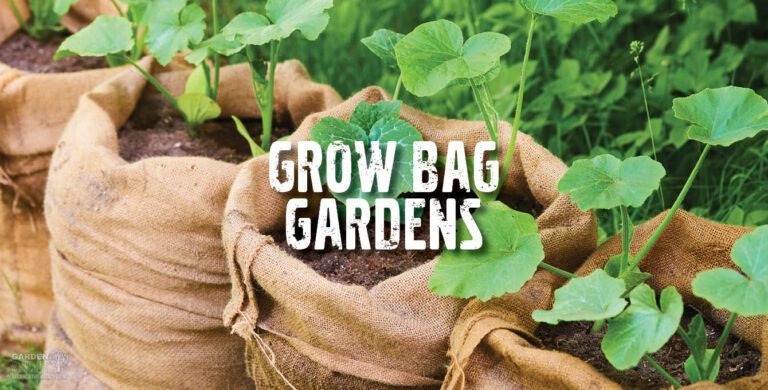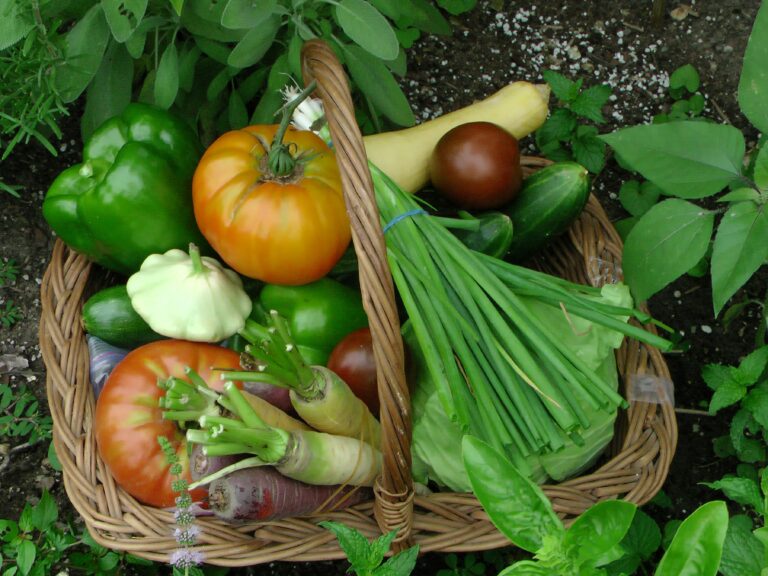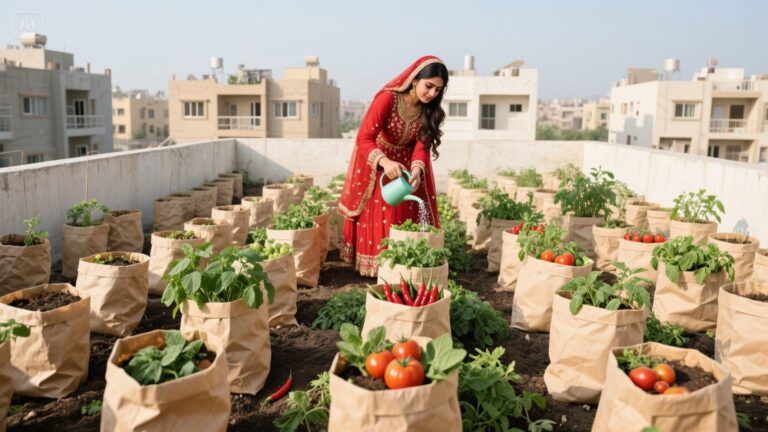![]()
The Ultimate Guide to Grow Bag Sizes for Vegetables in Pakistan

Introduction
Grow bags for kitchen gardening in Pakistan have become a game-changer for urban farmers, balcony growers, and rooftop gardeners. But how do you know what size grow bag is right for each vegetable? Choosing the correct Grow Bag Sizes for Vegetables based on plant type, root depth, and available space is essential for healthy growth and strong yields.
In cities like Karachi, Lahore, and Islamabad, a quiet revolution is taking root — quite literally — on rooftops, balconies, and small patios. With rising concerns over food quality, pesticide use, and limited access to fresh produce, more Pakistanis are turning to kitchen gardening. And at the heart of this movement is a humble but powerful tool: the grow Bag Sizes for Vegetable.https://greensoulpk.com/wp-admin/post.php?post=1676&action=edit
Grow bags offer an accessible, space-saving, and low-maintenance solution for growing vegetables at home. Whether you’re planting mint for your chai, coriander for your curries, or tomatoes for your salads, using the right size grow bag can significantly impact your harvest. It affects everything from root development and nutrient absorption to water drainage and overall yield.
“Kitchen gardening grow bags in Pakistan”But here’s the catch — most beginner gardeners overlook one crucial detail: not all plants thrive in the same bag size.https://greensoul.pk/blogs/guides/kitchen-gardening-for-beginners

In this ultimate guide, we’ll break down everything you need to know about choosing the best grow bag sizes for different vegetables, with a focus on Pakistan’s climate, crops, and urban gardening needs. Whether you’re starting a rooftop oasis or a balcony garden, this blog will help you pick the right grow bag for every plant — and make the most of your space.
To get the most out of this guide, we recommend checking out our blog on Grow Bags for Kitchen Gardening in Pakistan, where we introduce the basics and benefits of this gardening method.
If you’re just getting started, here’s a helpful resource: Beginner’s Guide to Kitchen Gardening in Pakistan — learn how to grow fresh food in limited spaces.
Why Grow Bag Size Matters
While it may seem like any bag will do, choosing the wrong size can lead to poor root growth, stunted plants, and low yields. Different vegetables have different root structures. Some, like mint or coriander, are shallow-rooted and do well in small, shallow containers. Others, like tomatoes or brinjals (eggplants), require deep containers to support their large root systems and heavy fruit loads.
Here’s why size is more than just a number when it comes to grow bags:
1. Root Development
Each plant species has a unique root depth requirement. A grow bag that’s too shallow will cause roots to crowd, spiral, or stop growing altogether. This can drastically reduce plant health and productivity.
2. Water Retention and Drainage
Bigger grow bags hold more soil, which in turn retains moisture better during hot summer months — especially important in Pakistan’s intense May–June heat. Smaller bags dry out quickly and need more frequent watering.
3. Temperature Regulation
But In Pakistani cities where daytime temperatures can soar above 40°C, larger bags offer more thermal buffer to roots, preventing heat stress. Smaller bags heat up faster and can damage tender root tips.
4. Air Pruning Advantage
One of the key benefits of grow bags over traditional plastic pots is air pruning — when roots reach the edge of a fabric bag, they stop growing outward and branch internally instead. This creates a healthier, denser root system. But the effect is best when bag size matches the plant’s growth pattern.
If you’re unsure whether to use grow bags or regular containers, our comparison post on Grow Bags vs. Traditional Pots is a great place to start.
Understanding Grow Bags: What Makes Them Ideal for Pakistani Gardeners
Before diving into sizes, it helps to understand what makes Grow Bag Sizes for Vegetables so effective — especially in the South Asian climate.
What Are Grow Bags?
Grow bags are flexible, breathable containers made from non-woven fabric or geotextile material. Unlike plastic pots, they allow for superior drainage and root aeration, making them perfect for vegetables that hate soggy soil.https://greensoul.pk/collections/grow-bags
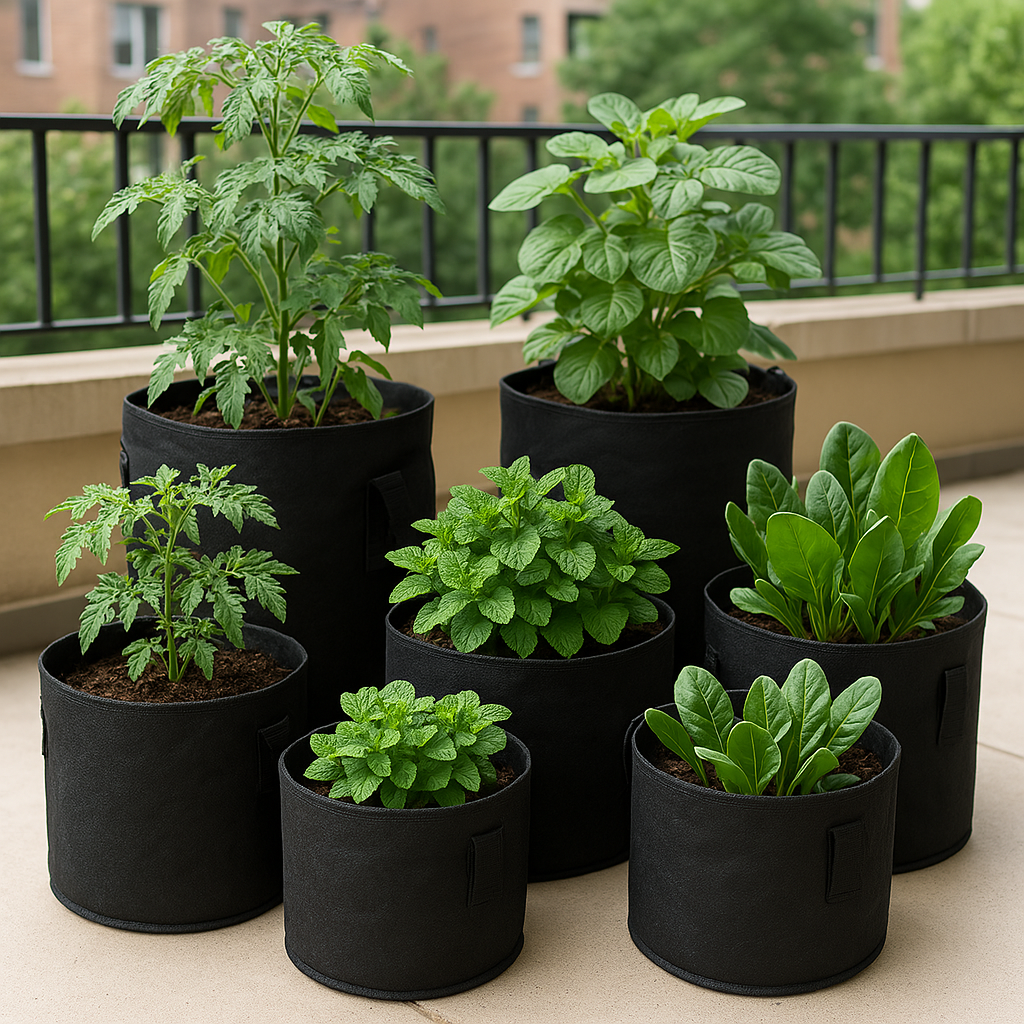
Why Grow Bags Are a Game-Changer in Pakistan
- Space-saving: Perfect for rooftops, balconies, and narrow patios
- Lightweight & movable: Easy to rearrange based on sunlight or season
- Affordable: Especially when compared to ceramic or large plastic pots
- Climate-friendly: The breathable material prevents overheating and root rot
- Eco-conscious: Many grow bags are reusable and made from recycled materials
Why Fabric Over Plastic in Hot Cities?
Plastic containers retain heat and suffocate roots — especially under direct sun in cities like Multan or Hyderabad. Fabric grow bags, like those from GREENSOUL.PK, keep roots cooler and prevent waterlogging during monsoon months.
Root Depth Categories: Matching Plants with Bag Sizes
To determine the ideal Grow Bag Sizes for Vegetables , we first need to understand how vegetables grow below the surface. Most vegetables fall into one of three categories based on root depth:
1. Shallow-rooted Vegetables (4–8 inches deep)
- Examples: Coriander (Dhania), Mint (Pudina), Lettuce, Spinach, Spring Onions
- Best Grow Bag Size: 6×6″ to 8×8″
- These are ideal for vertical stacking or growing in clusters.
2. Medium-rooted Vegetables (8–12 inches deep)
- Examples: Tomatoes, Chillies, Onions, Garlic, Brinjal
- Best Grow Bag Size: 10×10″ to 12×12″
- These require deeper soil and more space between plants.
3. Deep-rooted Vegetables (12–18 inches deep)
- Examples: Carrots, Potatoes, Radishes, Cucumbers, Tinda
- Best Grow Bag Size: 15×15″ or 18×18″
- Tubers and root crops need depth to expand without stress.
For a full planting guide Grow bag size and growing schedule based on Pakistan’s seasons, stay tuned for our upcoming downloadable grow bag planner!
Bonus: Importance of Soil Volume & Mix
Grow bag size doesn’t just determine root depth — it also controls how much soil volume you can fit. More soil = more nutrients + more moisture retention = healthier plants.
Use a loamy soil mix rich in organic matter, compost, and perlite or sand to ensure excellent drainage. Not sure how to prepare it? Check out our post on the Best Soil Mix for Grow Bags in Pakistani Climate for step-by-step guidance.
Coming Next: The Ultimate Vegetable Size Chart
Now that you understand the science behind choosing the right size, we’ll move into a detailed chart covering individual vegetables — including:
- Recommended grow bag size (in inches & liters)
- Ideal growing season in Pakistan
- Tips for maximizing yield
- Troubleshooting common problems
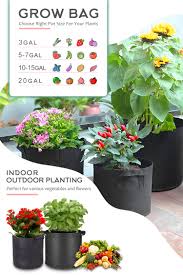
Vegetable Grow Bag Size Chart: Complete Plant-by-Plant Guide
Choosing the right grow Grow Bag Sizes for Vegetablesfor your vegetables isn’t just a guesswork task — it’s a science rooted in root depth, plant spread, and moisture needs. This section offers a detailed chart followed by plant-by-plant guidance to help you make confident decisions.https://greensoul.pk/blogs/guides/vegetables-for-grow-bags-pakistan
Whether you’re growing leafy greens on a balcony or harvesting potatoes from a rooftop tub, the right grow bag size will improve yield, simplify watering, and reduce plant stress.
Quick Reference Table: Grow Bag Sizes by Vegetable
| Vegetable | Ideal Grow Bag Size | Root Depth | Growing Season (PK) |
|---|---|---|---|
| Mint (Pudina) | 8×8 inch | Shallow | Year-round |
| Coriander (Dhania) | 8×8 inch | Shallow | Oct–Feb |
| Spinach | 8×8 or 10×10 inch | Shallow | Sept–Feb |
| Lettuce | 8×8 inch | Shallow | Oct–Feb |
| Tomatoes | 12×12 or 15×15 inch | Medium | Feb–May, July–Oct |
| Chillies | 10×10 or 12×12 inch | Medium | Feb–June |
| Brinjal (Baingan) | 12×12 or 15×15 inch | Medium–Deep | Feb–June |
| Cucumber | 15×15 inch | Deep | March–June |
| Carrots | 15×15 or 18×18 inch | Deep | Oct–Jan |
| Potatoes | 18×18 inch or larger | Deep | Oct–Feb |
| Onions | 10×10 inch | Medium | Oct–Feb |
| Garlic | 10×10 inch | Medium | Nov–Feb |
| Peas | 10×10 inch | Medium | Nov–Feb |
| Beans | 12×12 inch | Medium | Feb–May |
| Tinda (Apple Gourd) | 15×15 inch | Deep | March–June |
| Ladyfinger (Bhindi) | 12×12 inch | Medium | March–July |
Tip: Deep-rooted crops like potatoes need more soil depth and bag volume. Overcrowding or shallow soil may stunt tuber formation.
Not sure which vegetables grow best in containers? Explore our full list of Top Vegetables to Grow in Grow Bags for Pakistani climates and seasons.
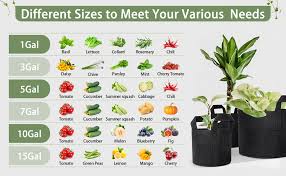
Plant-by-Plant Grow Bag Guide (with Tips & Common Mistakes)
“Grow bag sizes for vegetables”Let’s break it down with detailed insights for each popular vegetable grown in Pakistani homes.
Mint (Pudina)
- Ideal Size: 8×8 inches
- Why: Mint spreads fast through runners and does best in wide, shallow bags.
- Season: Year-round in moderate shade
- Tip: Prune regularly to avoid overcrowding.
- Mistake to Avoid: Letting it go dry — mint needs consistent moisture.
Coriander (Dhania)
- Ideal Size: 8×8 inches
- Why: Coriander is a short-cycle, shallow-rooted herb.
- Season: Best from October to February
- Tip: Sow thickly and harvest in clumps.
- Mistake: Over-fertilizing — it encourages leaf burn.
Spinach & Lettuce
- Ideal Size: 8×8 or 10×10 inches
- Why: Shallow roots but needs room to spread.
- Season: September to February
- Tip: Harvest outer leaves first for continuous yield.
- Mistake: Too much sun in early growth — prefer partial shade.
Best Vegetables for Containers – The Spruce
(Great resource for container-friendly leafy greens.)
Tomatoes
- Ideal Size: 12×12 or 15×15 inches
- Why: Deep-rooted with large above-ground growth
- Season: Feb–May & July–Oct
- Tip: Stake early; tomatoes but need strong support.
- Mistake: Using bags too small — root crowding causes wilting.
Chillies (Hari Mirch)
- Ideal Size: 10×10 or 12×12 inches
- Why: Requires medium depth with good drainage
- Season: Spring to early summer
- Tip: Add a handful of compost monthly.
- Mistake: Overwatering — causes root rot in humid climates.
Brinjal (Baingan)
- Ideal Size: 12×12 or 15×15 inches
- Why: Medium to deep roots and heavy fruit
- Season: February–June
- Tip: Use neem spray to deter pests.
- Mistake: Overcrowding in small bags limits fruit production.
Cucumber
- Ideal Size: 15×15 inch
- Why: Sprawling vines and deep roots
- Season: Spring to early summer
- Tip: Train vines vertically to save space.
- Mistake: Letting vines touch soil — encourages rot.
Potatoes
- Ideal Size: 18×18 inch or bigger
- Why: Deep-rooting tuber crop
- Season: October–February
- Tip: Hill up soil around growing shoots for better yields.
- Mistake: Using shallow bags — tubers won’t develop well.
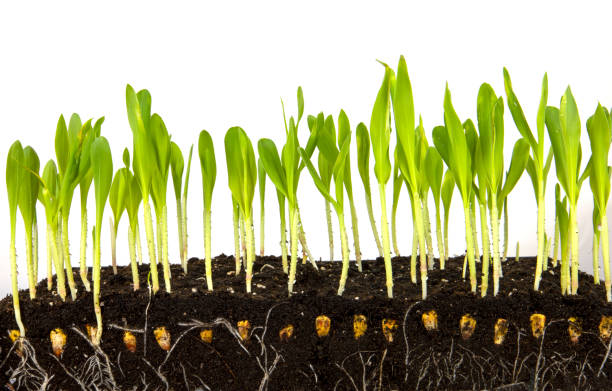
Onions & Garlic
- Ideal Size: 10×10 inch
- Why: Medium root systems and moderate spread
- Season: Oct–Feb
- Tip: Let the top leaves yellow before harvesting.
- Mistake: Harvesting too early = small bulbs.
Beans & Peas
- Ideal Size: 12×12 inch
- Why: Need moderate root depth and vertical growth
- Season: Nov–March
- Tip: Let the Support with sticks or netting before seeding.
- Mistake: Growing in windy areas without protection.
Tinda (Apple Gourd) & Bhindi (Okra)
- Ideal Size: 15×15 inch (Tinda), 12×12 inch (Bhindi)
- Why: Warm-season climbers or upright fruiters
- Season: March–July
- Tip: Regular harvest encourages more fruiting.
- Mistake: Ignoring pest control — attracts fruit borers.
Planning Tip:
“Choosing grow bags for Pakistani vegetable gardens”If you’re not sure what to grow and when, the FAO’s guide on Urban Agriculture in Pakistan outlines seasonal considerations and climate adaptability for city gardens.https://greensoul.pk/blogs/guides/vegetables-for-grow-bags-pakistan

Choosing the Right Grow Bag Size for Vegetables in Pakistan
When it comes to growing vegetables in Pakistan, selecting the right grow bag size plays a key role in ensuring healthy plant growth and maximum yield. Since different vegetables have different root space requirements, choosing the appropriate size can significantly impact your gardening success.
Small Grow Bags (5 Gallons): Best for Herbs and Leafy Greens
To begin with, smaller grow bags—such as 5-gallon sizes—are ideal for growing herbs like mint, coriander, and leafy greens like spinach and lettuce. These plants have shallow roots and don’t need much soil, making compact bags a perfect fit for balconies or small spaces.
Additionally, they are easy to move and great for urban gardeners with limited space.
Medium Grow Bags (7–10 Gallons): Great for Fruiting Plants
On the other hand, vegetables that need more room for root development—such as tomatoes, peppers, and eggplants—benefit greatly from medium-sized grow bags (7 to 10 gallons). These provide enough depth and space for the roots to thrive, thereby supporting better fruit production.
Furthermore, this size allows for stronger plant structures and more stable growth.
Large Grow Bags (15–20 Gallons): Ideal for Root Vegetables
For root vegetables like potatoes, carrots, and beets, larger bags ranging from 15 to 20 gallons work best. These crops require deep, loose soil that allows their roots to expand properly without restriction.
Moreover, large bags make harvesting easier, as the entire bag can be tipped out to access the produce.
Don’t Forget the Material: Breathable Fabrics for Better Growth
In addition to choosing the right size, it’s essential to consider the material of the grow bag. Breathable fabrics like felt or non-woven polypropylene offer superior drainage and aeration.
As a result, they help prevent root rot and support healthier root systems, which leads to more vigorous plant growth.
Final Thoughts: Match the Bag to the Veggie
In conclusion, matching the grow bag size to the type of vegetable you’re planting promotes healthier growth and higher yields.
Whether you’re cultivating herbs on a windowsill or growing root crops on a rooftop, the right grow bag can make all the difference in your kitchen gardening journey in Pakistan.
Conclusion:
Choosing the right grow bag sizes for vegetables is essential for a successful and sustainable kitchen garden. Whether you’re planting spinach, tomatoes, or potatoes, knowing the ideal bag size ensures better yields, fewer diseases, and happier plants.
If you’re just starting out, don’t forget to visit our Beginner’s Guide to Kitchen Gardening in Pakistan and Top Vegetables to Grow in Grow Bags to plan your growing season

